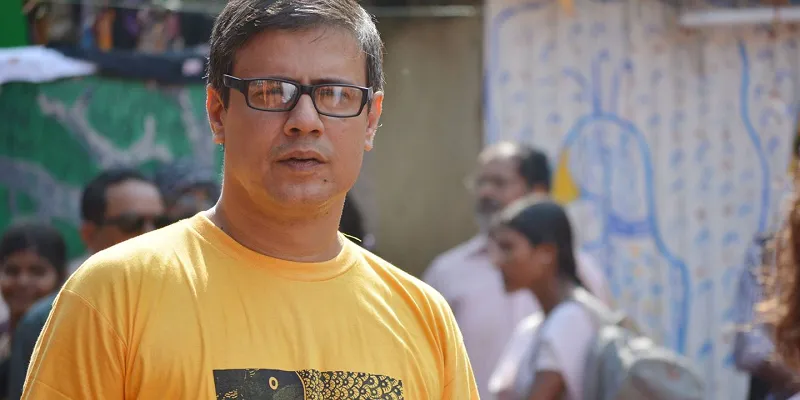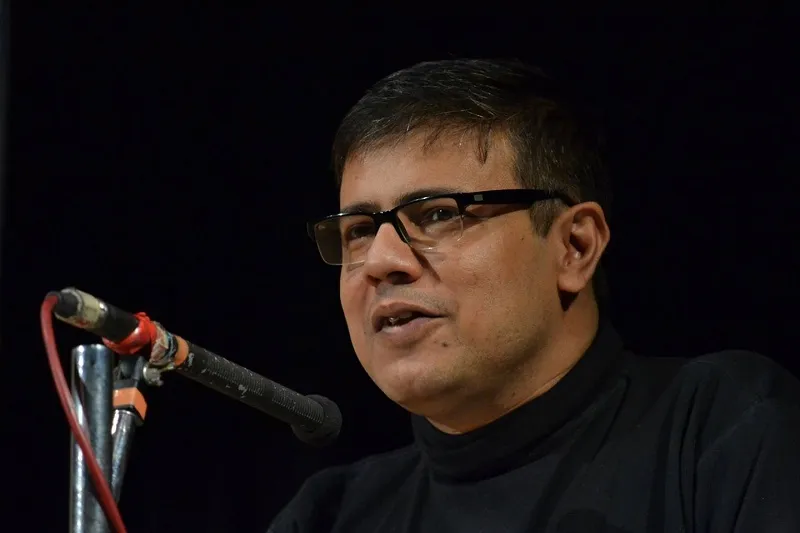From rural practitioners to celebrated artists – a journey made possible under Amitava Bhattacharya’s leadership
Amitava Bhattacharya, an IIT Kharagpur alumnus, left his job in the USA in 1999 and came back with the dream for a better India. In 2000 he formed banglanatak dot com, a social development organisation specializing in ‘Culture and Development’. Amitava believes that the oral and performing folk art traditions can emerge as a cultural capital for developing rural enterprises.

In 2004, Amitava launched ‘Art for Livelihood’ (AFL) the flagship project of banglanatak dot com with 3200 rural community artists engaged in 6 traditional art forms across 6 districts of West Bengal in India. “Culture is a great enabler. Cultural capital in the form of oral and performing art traditions is an asset for developing rural enterprise. In the ‘Art for Livelihood’ (AFL) initiative, cultural heritage is revitalized through training, exposure and promotion. New markets are created and new brands are developed to promote traditional performing and visual arts and crafts. Heritage becomes a means of livelihood and empowerment. Our motto is ‘To preserve art, let the artists survive’ and the vision is to preserve and revitalise subaltern heritage to address social exclusion, poverty and marginalization,” explains Amitava.
Since its inception, AFL has been instrumental in bringing a change to the lives of more than 14000 folk artists from West Bengal, Bihar, Punjab, Rajasthan and Odisha. Today AFL has reached out to millions of people, gained new audience, attracted media support thus facilitating self confidence, direct market linkage and substantial socio economic growth of the rural practitioners. The model is now being nationally endorsed. Appreciating the methodology, UNESCO HQ accredited banglanatak dot com to provide advisory services to their Intangible Heritage committee in 2010.

“If investment is made in culture, it has the potential of developing a micro-economy, creating opportunity for ‘unskilled daily labours’ to change identity to ‘artists’ and it motivates to participate in development. But unfortunately, investment on community’s culture is extremely low and that too is limited to ad-hoc documentation, cultural mapping and organizing a few performances at festivals/ built heritage sites. Because culture has not been seen as pathway of development by planners/ practitioners, with global economic depressions it has been placed at low priority. I feel culture has the potential to evolve as a key catalyst in community led sustainable development. I also feel that once community gets engagement and witnesses economic gains, sees recognition and feels proud, they will protect, value and grow with their culture. Culture demands greater priority and investment. Planners and policy makers at international and national levels need to be made aware of its potential and mobilized,” says Amitava.
As a part of AFL, cultural tourism has also been developed by banglanatak at West Bengal and Bihar, integrating built, natural and cultural heritage. Folk art centres have been established in art villages which promote education tourism by facilitating interaction between the local community and the visitors. The local people share their heritage and the tourists take back a piece of human history. Capacity building of local communities to own and manage the tourism destinations has promoted responsible tourism leading to socio economic empowerment of people. Workshops are held with the folk artists to innovate tourism products. Musicians jam with the folk singers from different states and also abroad while visitors learn about extracting natural colour from flowers, fruits and bark from folk painters. Folk Festivals are organised in the villages to provide new contexts and events to revitalise heritage and develop the villages as tourism destinations. The larger artist community gets an opportunity to showcase their talent at these festivals. Festivals are organized in the villages of Madhubani painters and scroll painters of Bengal, villages of Fakir (Sufi music of Bengal) singers and at different tribal villages.
“We also organize urban festivals engaging youth in heritage, promoting cultural pluralism, creating appreciation and awareness for subaltern culture and lifestyle and facilitating exchange and interaction among rural and urban artists. Our annual festival Sufi Sutra held in Kolkata, Goa, Delhi and Bihar since 2011 showcases Sufi and traditional music from all over the world. The folk performers from Bengal share platform with international artists in this festival. Already 27 countries have participated in the festival making it truly a world music concert,” informs Bhattacharya.
Over the years AFL has created tremendous impact in the lives of the artists who are now acknowledged both nationally and internationally as renowned performers. “The average monthly income of the artists has gone up from 8 USD to 60 USD. For 40% people it has become the primary livelihood, for another 40% it is now an important secondary livelihood and around 10% of people are earning to the tune of 250 USD. Sanitation has gone up from less than 10% to above 80% in many of the artists’ villages, most of the beneficiary families (mostly were illiterates) are sending children to school, migration has reduces in the artists’ villages, average age of folk artist has gone down from 41 to 28 years – youth and women are participating,” adds Amitava.
Amitava is presently working with the artisans and craft persons of ten villages of Bengal which have their own unique craft traditions. These include terracotta, Dokra, Kantha embroidery, wooden doll and mask, Madurkathi, Sitalpati, Patachitra, Chau mask and clay doll. “West Bengal has a rich heritage of crafts and it is estimated that 5,50,000 persons are engaged in the sector. Though there are artist clusters producing nationally and internationally acclaimed products, the potential of the sector in terms of employment, enterprises, export and growth is yet to be unleashed. The crafts persons are at the bottom of the value chain and suffer low wage based income. Owing to poor income, many, especially the youth are giving up their traditional vocation and often opting for daily labour. Yet, handicraft is a traditional skill of community, which can lead to both enterprise formations at grass-roots and recognition of communities/ villages. While enterprise helps in resource generation and monetary benefits; recognition leads to pride, aspiration and participation in development. To address this issue we are implementing the unique model of Art for Life in developing ten rural craft hubs with support of MSSE Department of Micro and Small Scale Enterprise & Textiles (MSSE&T), Government of West Bengal in partnership with UNESCO,” informs Amitava.
“Our unique initiative ‘CamEra: Our City, Our Angle’, engaged the youth of Kolkata, Bhubaneswar and Goa in heritage learning through photography and witnessed young photographers capture the legacy of their cities through lenses. Their shots were exhibited at different public places where thousands of onlookers thronged to wonder at the riches and history of the places,” adds Ananya Bhattacharya, Amitava’s wife and co-director at banglanatak dot com.
Amitava is a folk music aficionado and you can hear him joining the folk artists in an informal tete a tete where he blends seamlessly with the rural folk artists. He has participated in a number of seminars in Europe and Asia for the advocacy of the AFL model and has been successful in making his audience appreciate and follow his ideas. Amitava plans to reach out to many more folk performers across India and is presently engaged in policy advocacy for recognition of cultural skills as means of livelihood.







